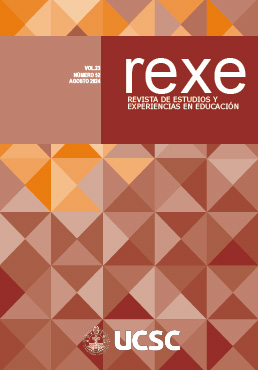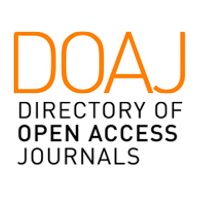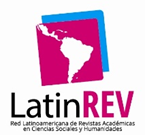Attrition and entry in the teaching workforce in Chile between 2021-2022
DOI:
https://doi.org/10.21703/rexe.v23i52.2369Keywords:
Teachers, Teacher policy, Pandemics, Teacher shortage, ChileAbstract
Although teaching careers have a central role in the government education agenda and in the research agenda, the different national studies still do not cover the period after the Teaching Career Law or the COVID-19 crisis to understand the revolving door, a phenomenon that occurs among those who left and those who re-enter and that helps to make the teaching shortage invisible. Thus, seeking to contribute to this reflection, the objective of this article was to examine the attrition and the entry to the teaching classroom between 2021-2022 by administrative dependency. The methodology was quantitative and descriptive. The sample consisted of pre-school, primary and secondary education teachers in regular education and not retired. Statistics on the Teaching Position Base were used. The results show a 9.1% attrition and 11.5% (re)entry, as well as a minor effect of the Law, at least during the second years of the pandemic and until it enters to regime. The conclusions invite to respond to the challenge with attraction and retention, especially in specific groups, such as teachers with more years of experience in subsidized schools of those who have a degree in education among public schools.
Downloads
References
Ávalos, B., y Valenzuela, J. P. (2016). Education for all and attrition/retention of new teachers: A trajectory study in Chile. International Journal of Educational Development, 49, 279-290. https://doi.org/10.1016/j.ijedudev.2016.03.012
Bacher-Hicks, A., Chi, O. y Orellana, A. (2023). Two years later: how COVID-19 has shaped the teacher workforce. Educational Research, 52(4), 219–29. https://doi.org/10.3102/0013189X231153659.
Borman, G. y Dowling, N. (2008). Teacher attrition and retention: a meta-analytic and narrative review of research. Review of Educational Research, 78(3), 367–409. http://dx.doi.org/10.3102/0034654308321455
Brandenburg, R., Larsen, E., Simpson, A. Sallis, R. y Trần, D. (2024). ‘I left the teaching profession… and this is what I am doing now’: a national study of teacher attrition. The Australian Educational Researcher, 1-20. https://doi.org/10.1007/s13384-024-00697-1
Cabezas, V., Gallego, F., Santelices, V. Zarhi, M. (2013). Factores correlacionados con las trayectorias laborales de docentes en Chile, con especial énfasis en sus atributos académicos. Proyecto FONIDE N° FS511082- 2010. Santiago de Chile, Ministerio de Educación. Disponible en: https://centroestudios.mineduc.cl/wp-content/uploads/sites/100/2017/07/Informe-Final-Veronica-Cabezas-PUC-511082.pdf
Carrasco, D., Godoy, M. y Rivera, M. (2017). Rotación de profesores en Chile. Quienes son y cuales es el contexto de quienes dejan su primer trabajo. Midevidencias, 11, 1-7. Disponible en: https://mideuc.cl/wp-content/uploads/2022/11/MidEvidencias-N11.pdf
Carrasco, D., Manzi, J. y Treviño, E. (2018). Trayectorias laborales de los docentes: ¿dónde, cuándo y bajo qué condiciones dejan su primer trabajo?. Temas de la Agenda Pública, 13(105), 1-20. Disponible en: https://politicaspublicas.uc.cl/publicacion/trayectorias-laborales-de-los-docentes/
Carver-Thomas, D. y Darling-Hammond, L. (2017). Teacher turnover. Why it matters and what we can do about it. Palo Alto: Learning Policy Institute. Disponible en: https://learningpolicyinstitute.org/product/teacher-turnover-report
Centro de Investigación Avanzada en Educación [CIAE] (9 de abril, 2021). El 20% de profesores se retira en los primeros 5 años de vida laboral y las especialidades más críticas son educación parvularia y media. Santiago de Chile, CIAE.
Cols, E. (2008). La formación docente inicial como trayectoria. Ciclo de desarrollo profesional de directores. Bogotá́: INFD.
Díaz, A., López, D., Salas, M. y Carrasco, D. (2021). Movilidad de profesores chilenos. Influencia de variables demográficas, características del establecimiento escolar y condiciones laborales. Perfiles Educativos, 43(172), 42-59. https://doi.org/10.22201/iisue.24486167e.2021.172.59514
Diliberti, M., Schwartz, H. y Grant, D. (2021). Stress topped the reasons why public-school teachers quit, even before COVID-19. Santa Mónica: Rand Corporation. Disponible en: https://www.rand.org/pubs/research_reports/RRA1121-2.html
Elige Educar (2019). Análisis y proyección de la dotación docente en Chile. Santiago de Chile, Elige Educar. Disponible en: https://eligeeducar.cl/content/uploads/2020/11/resumen-ejecutivo-anaxxlisis-y-proyeccioxxn-dotacioxxn-docente-en-chile-ee2019.pdf
Elige Educar (2022). Retención, rotación, salidas de aula y reincorporación docente. Santiago de Chile, Elige Educar. Disponible en: https://eligeeducar.cl/content/uploads/2022/11/resumen-ejecutivo-estudio-retencioxxn-rotacioxxn-salidas-de-aula-y-reincorporacioxxn-docente.pdf
Evans, D. y Mendez, A. (2023). How to recruit teachers for hard-to-staff schools: A systematic review of evidence from low- and middle-income countries. Economics of Education Review, 95, 102430. https://doi.org/10.1016/j.econedurev.2023.102430
Falck, D. (2015). Movilidad docente en Chile: Una mirada longitudinal 2004-2012. Programa de las Naciones Unidas para el Desarrollo (PNUD). Disponible en: https://bibliotecadigital.mineduc.cl/bitstream/handle/20.500.12365/18561/E15-0019.pdf?sequence=1&isAllowed=y
Fuenzalida, D., Ávalos, B., Valenzuela, J. P., Acuña, F (2014). Trayectorias docentes: Ejercicio profesional y abandono. Congreso Interdisciplinario de Investigación en Educación. Santiago. Chile.
Glassow, L. N. (2024). Inequitable teacher turnover and performance-based appraisal: a global trend? Journal of Education Policy, 39(2), 276-302. https://dx.doi.org/10.1080/02680939.2023.2189753
Goldhaber, D. y Theobald, R. (2022). Teacher attrition and mobility in the pandemic. Educational Evaluation and Policy Analysis, 20(10), 1-6. https://doi.org/10.3102/01623737221139285
Hernández-Sampieri, R. y Mendoza, C. P. (2018). Metodología de la investigación. Las rutas cuantitativas, cualitativas y mixtas. México, McGraw-Hill Education.
Ingersoll, R. (2001). Teacher turnover and teacher shortages: An organizational analysis. American Education Research Journal, 38, 499–534. http://dx.doi.org/10.3102/00028312038003499
Ingersoll, R. (2003). Is there really a teacher shortage? Seattle: Center for the Study of Teaching and Policy, University of Washington. Disponible en: https://www.gse.upenn.edu/pdf/rmi/Shortage-RMI-09-2003.pdf
Ingersoll, R. y Tran, H. (2023). Teacher shortages and turnover in rural schools in the US: an organizational analysis. Educational Administration Quarterly, 59(2) 396-431. https://doi.org/10.1177/0013161X231159922
López, I. (2015). Retiro temprano de profesores del sistema educativo de Chile [Tesis para optar a magíster en economía, Universidad de Chile]. https://repositorio.uchile.cl/handle/2250/137123
Kraft, M., Donaldson, M. y Simon, N. (2021). Teacher retention in public schools. A review of the research. Nueva York: Upbeat. Disponible en: https://f.hubspotusercontent20.net/hubfs/2914128/Upbeat_Literature%20Review%202.0_February%202021.pdf
Kraft, M., Simon, N. y Lyon, M. (2020). Sustaining a sense of success: The importance of teacher working conditions during the COVID-19 pandemic. Annenberg: Brown University. Disponible en: https://scholar.harvard.edu/mkraft/publications/sustaining-sense-success-importance-teacher-working-conditions-during-covid-19
Ministerio de Educación (MINEDUC). (2015). Aportes a la reflexión sobre movilidad y abandono docente 2013-2014. Santiago de Chile, MINEDUC. Disponible en: https://centroestudios.mineduc.cl/wp-content/uploads/sites/100/2017/06/evidencia-final_enero2015.pdf
Ministerio de Educación (MINEDUC) (2021). Mesa para la atracción de jóvenes a la carrera de pedagogía. Santiago de Chile, Subsecretaria de Educación Superior. Disponible en: https://educacionsuperior.mineduc.cl/wp-content/uploads/sites/49/2021/01/MESA-ATRACCION-CARRERAS-PEDAGOGIA-VF.pdf
Nguyen, T. (2020). Teacher attrition and retention in Kansas: A case study of geographically rural states with persistent teacher shortages. Online Journal of Rural Research & Policy, 15(1). https://doi.org/10.4148/1936-0487.1100
Nguyen, T., Pham, L. Springer, M. y Crouch, M. (2019). The factors of teacher attrition and retention: An updated and expanded meta-analysis of the literature. Annenberg Institute at Brown University. https://doi.org/10.26300/cdf3-4555
Orrego, V. (2022). Educación remota y salud mental docente en tiempos de COVID-19. REXE, Revista de Estudios y Experiencias en Educación, 21(45), 12-29. https://doi.org/10.21703/0718-5162.v21.n45.2022.001
Orrego, V. (2023a). Covid-19 y salud mental docente: diferencias en torno al sexo y el rol de cuidador/a. RMIE, Revista Mexicana de Investigación Educativa, 28(97), 587-609. https://orcid.org/0000-0002-0977-2280
Orrego, V. (2023b). Rotación y deserción docente en Chile: ¿por qué es importante y cómo prevenirla y/o mitigarla? REXE, Revista de Estudios y Experiencias en Educación, 22(50), 267–281. https://doi.org/10.21703/rexe.v22i50.1395
Orrego, V. (2023c). Salud mental docente tras dos años de pandemia por COVID-19. REXE, Revista de Estudios y Experiencias en Educación, 22(49), 127-141. https://doi.org/10.21703/rexe.v22i49.1689
Pascual, J., Orrego, V., Cheyre, M. e Iturrieta, C. (2024). Navegando la adversidad y la oportunidad. Liderazgo escolar en tiempos de crisis. REICE. Revista Iberoamericana sobre Calidad, Eficacia y Cambio en Educación, 22(1), 87–102. https://doi.org/10.15366/reice2024.22.1.005
Podolsky, A, Kini, T., Darling-Hammond, L. y Bishop, J. (2019). Strategies for attracting and retaining educators: What does the evidence say? Education Policy Analysis Archives, 27(38). http://dx.doi.org/10.14507/epaa.27.3722
Rivero, M. del R. (2015). The link of teacher career paths on the distribution of high qualified teachers: a Chilean case study. Archivos Analíticos de Políticas Educativas, 23(73), 1-35. https://doi.org/10.14507/epaa.v23.1710
Ronfeldt, M., Loeb, S., y Wyckoff, J. (2013). How teacher turnover harms student achievement. American Educational Research Journal, 50(1), 4–36. https://doi.org/10.3102/0002831212463813
Simon, N. y Johnson, S. M. (2015). Teacher turnover in high-poverty schools: what we know and can do? Teachers College Record, 117(3), 1–36. https://doi.org/10.1177/016146811511700305
Shell, D., Carletta, S. y White, H. (2023). Principal characteristics' effect on teacher retention: A systematic review. Educational Research and Reviews, 18(6), 104-113. https://doi.org/10.5897/ERR2023.4318
Strunk, K. y Robinson, J. (2006). Oh, won’t you stay: a multilevel analysis of the difficulties in retaining qualified teachers. Peabody Journal of Education, 81(4), 65–94. https://doi.org/10.1207/s15327930pje8104_4
Valenzuela, J. P. y Sevilla, A. (2013). La movilidad de los nuevos profesores chilenos en la década del 2000: un sistema escolar viviendo en peligro. Proyecto N° 1120740. Santiago de Chile: Fondo Nacional de la Ciencia y Tecnología [FONDECYT].
Vezub, L. (2004). Las trayectorias de desarrollo profesional docente: algunos conceptos para su abordaje. Revista IICE, 22, 3-12.
Weston, D., Hindley, B. y Cunningham, M. (2021). A culture of improvement. Reviewing the research on teacher working conditions. Londres: Teacher Development Trust. Disponible en: https://tdtrust.org/coi/
Downloads
Published
Issue
Section
License
Open Access Policy
This journal provides immediate open access to its content, based on the principle that offering the public free access to research fosters greater global knowledge exchange.
License
The REXE Journal, “Journal of Studies and Experiences in Education,” published by the Faculty of Education at the Universidad Católica de la Santísima Concepción, is distributed under a License. Creative Commons Atribución 4.0 Internacional.






